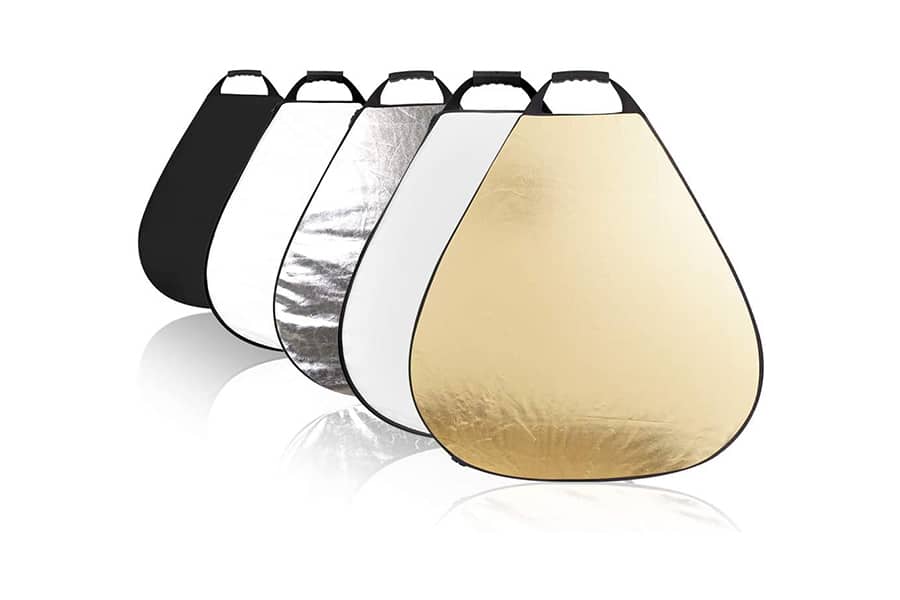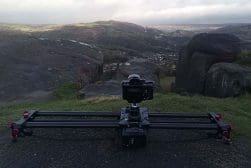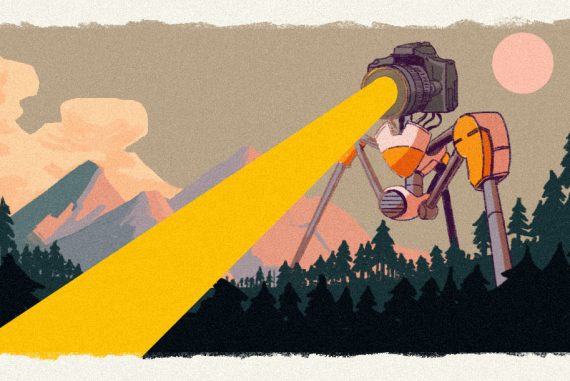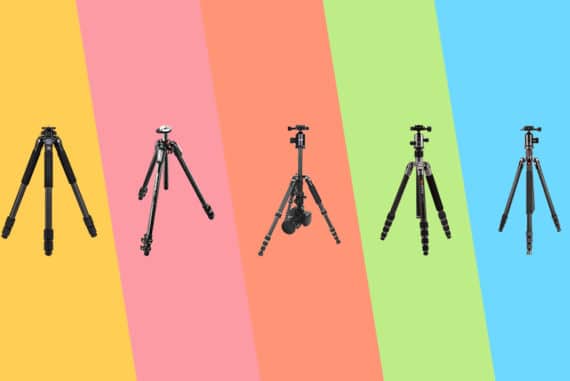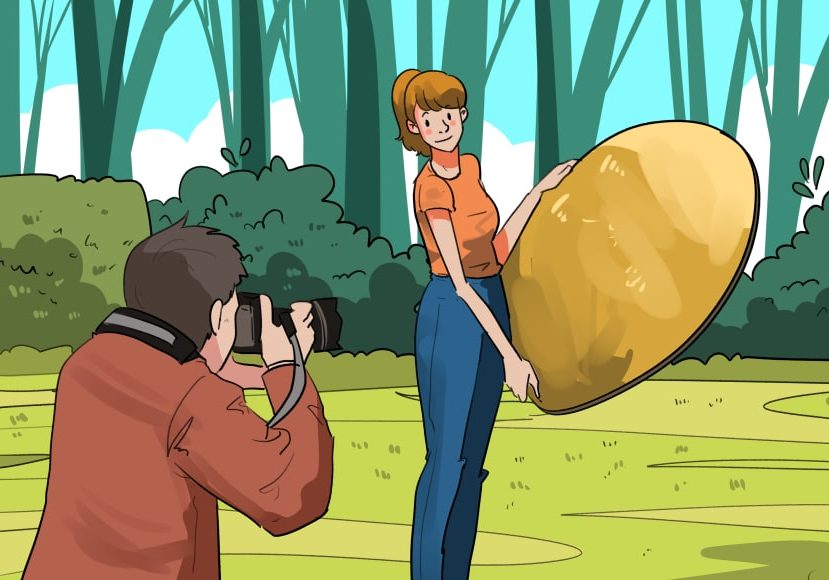
Best Photography Reflector for Portrait Photographers (& How to Use One)
Find out the best reflectors for portrait photography – plus pro tips on how to use them and how to choose the right one for you.
A photography reflector is an essential piece of kit to make the most of your natural light portrait photoshoots.
Also useful in studio photography, a good reflector can bounce, diffuse or flag natural and artificial light.
Good news – reflectors are affordable, lightweight, and simple to use!
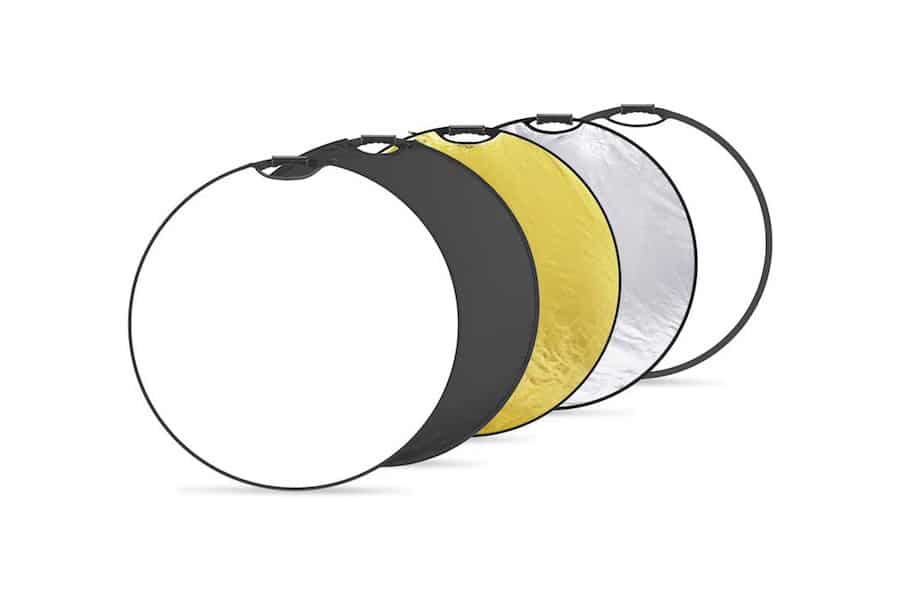
Versatile, portable and affordable - an ideal 5 in 1 reflector for photographers of all standards.
With so many shapes, sizes, and colors, the only problem is choosing one – that’s why we wrote this guide.
(We also included some basic pro tips on how to use a reflector.)
Ready to use reflected light to your advantage in 2024?
Let’s get stuck in!
4 Best Reflectors for Photography in 2024
| Image | Product | Features | |
|---|---|---|---|
 | Neewer Multi-Disc ReflectorOUR #1 CHOICE |
| View Price → |
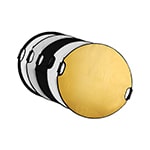 | Selens ReflectorGREAT VALUE |
| View Price → |
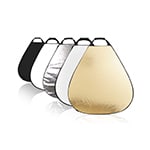 | Fotocreat Triangle Reflector |
| View Price → |
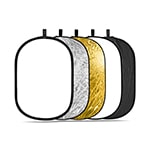 | Neewer Multi Reflector |
| View Price → |
1. Neewer 5-in-1 Multi-Disc Reflector
- 5 reflectors in 1
- Collapsable
- Grip handle
- Carry bag
- Hard to handle in strong winds
The Neewer 5-in-1 Multi-Disc Reflector is ideal for photographers wanting to control light outdoors or in a studio environment.
It includes a single, collapsible translucent panel ideal for light diffusion. A form-fitting material case features gold and silver panels that convert to white and black on the opposite side.
The 43″ reflector features a single grip handle for greater control of light direction – especially if outdoors in windy conditions.
The Newer 5-in-1 is highly portable as it collapses to a 15.7″ disc that fits neatly into the included carry case.
2. Selens 5-in-1 Handle Reflector
- Includes translucent panel
- Four additional colors
- Dual grip handles
- Collapsible
- Not suited to group shots
The Selens 5-in-1 Handle Reflector is a handy solution for photographers on the go. The 43″ size travels neatly in a 15″ carry case with a durable zipper and loop to attach it to a camera backpack.
A translucent panel forms the base unit of the kit along with two durable grip handles for greater control of your photography lighting.
A double-sided and reversible cover features gold, silver, black and white reflective surfaces.
The Selens 5-in-1 delivers total creative control to bounce light, subtract light, and diffuse light.
3. Fotocreat 5-in-1 Handle Triangle Reflector
- Compact size
- Grip handle
- Ideal for headshots
- Solo use possible
- Shape limits use
Photographers needing a truly compact option should pick up the Fotocreat 5-in-1 Handle Triangle Reflector.
The triangular shape of this reflector photography gear is ideal for headshots and portraits where the model holds the small reflector by the handle. Alternatively, photographers working solo can hold it in one hand and operate their camera in the other.
Despite its 32″ size, the Fotocreat 5-in-1 features translucent, black, white, silver and gold reflective surfaces to control any light source.
4. Neewer 5-in-1 Multi Reflector
- 5-in-1 reflector options
- Ideal for full-body portraits and group shots
- Collapsible
- Carry bag
- No grip handles
The rectangle/oblong Neewer 5-in-1 Multi Reflector features a larger reflective surface at 40″ by 60″. As a result, it’s just what you need for larger group shots or full body fashion and portrait photography.
The significant surface area includes a diffuser panel to take the place of a large softbox outdoors or in a studio.
While the Neewer 5-in-1 doesn’t include a grip handle, it can be mounted to a light stand for ease of use.
The reversible cover features a black side for dramatic shadows and white for a soft light source on a subject’s face. It also includes the standard silver and gold for light temperature control.
How do I Choose a Reflector?
Here are the 5 key things you need to consider when choosing a photography reflector.
1. Colour
For those new to using these, it raises the question: what colors are good photo reflectors?
If you walk into a camera store or shop online, it’ll become evident that there are different colors of photography reflector available.
Let’s take a look at the common colors so you know how to choose the best one for you.
- White – When people ask, “What is the best light reflector?”, I generally answer that it all depends on your style of photography – but for all-around use, a white reflector is best. A white reflector bounces a good amount of light without causing excessive contrast in your photos.
- Black – Why would a photographer use a black reflector? The truth is that black surfaces are ideal for portrait photography to cut down highlights and cast more shadows on areas of the image.
- Gold – A gold reflector is a common choice for portrait photographers that want to add a sun-kissed look to photos. Gold can be used indoors or outdoors to cast a golden light on a subject.
- Silver – A silver reflector is a common choice as it reflects the light towards a subject without overly changing the temperature of the light. A silver reflector is used outdoors to direct sunlight onto a subject.
- Zebra – A zebra reflector features stripes of two colors, such as gold and silver. That way, the warm and cool light is directed to the subject.
- Translucent – The translucent reflector doesn’t actually reflect light – however, many reflector kits include one. The translucent material is ideal for firing a flash or speedlight through and creating a soft light.
- Combination – A combination reflector will typically feature at least two different reflector colors. There may be gold on one side and silver on the other. Other combination reflectors feature slip-on covers to replace the reflective surface with silver, gold, black, and white.
2. Type
- Reflector – The most common type of photography reflector is, of course, one that reflects light from the sun or artificial light sources. These are typically made from a soft and flexible material.
- Diffuser – The diffuser reflector is also known as translucent and is usually a milky white material. Rather than reflect light, you shoot a flash through the diffuser to soften the light.
- Board – Board reflectors are flat, stiff boards that bound the light towards a subject. Board reflectors are also known as flats, planes, and bounce boards.
- Sheets – Many photographers and videographers will often use a reflector sheet to direct a lot of light. The sheets work much like a photography backdrop as they attach to a backdrop stand or frame.
3. Size
Camera reflectors come in all different shapes and sizes – choosing the right one depends on your shooting style and how much light is available. So what size photography reflector is best?
If you shoot full-body outdoor portraits or groups shots, then a larger 50″ photography reflector is ideal. However, if you’re always on the go and have to travel with your kit in a bag, a small 30″ reflector would suit.
The most common size is 42,” and it’s recommended for ease of use and coverage of most subjects.
4. Shape
- Round – The most common reflector shape is round. They come in various sizes and typically fold down into a compact form for storage and transport.
- Rectangular – Rectangular reflectors typically come in larger sizes and are ideal for full-body portraits and group shots. Their elongated height allows for light to be directed to the full body of a model.
- Triangular – Triangular diffusers are often smaller and more compact. Their triangular shape makes it easier to hold one-handed and point the reflector directly at the subject. Triangular reflectors are great for photographers capturing headshots.
5. Material
Most reflectors feature a soft reflective coated material held in shape by a flexible frame. Much like a pop-up tent or sun shelter, the reflector frame allows you to fold down the reflector into a smaller shape that fits in a pouch.
As a result, these are ideal for travel and storage for photographers on the move.
Boards and bounce boards are stiffer and made from durable cards or core-board. These don’t fold down and are best for studio settings where you don’t have to move them around.
How to Use a Photography Reflector
Photography reflectors are essential tools to manage any available light source and impact your subject and exposure.
They transform flat lighting from your main light source and add a little drama to the scene. Plus, they achieve this without you having to purchase an extra light.
Knowing how to use one is applicable indoors in a studio environment just as much as outdoors dealing with sunlight.
- How to Hold a Photography Reflector
Depending on the size, it can be tricky to hold one and take photos simultaneously. Smaller options are easier to manage – especially if your camera is on a tripod and your left hand is free.
Larger options require a stand or assistant to hold them and direct the light to the right place. Some photographers lean them against objects or even their own bodies. In some cases, the model can hold the reflector out of the shot.
At times you’ll place many reflectors directly in front of and to each side of your subject. They use the available natural light to create a direct light source and push back harsh shadows.
- How to Use a Reflector In Natural Light
If you’re shooting outdoors and using a reflector, the quality of the light determines the color to use.
If it’s an overcast day or the subjects are in a shady area, use a silver panel to direct soft light onto the subjects. It will increase the exposure of the subjects without impacting the shadow qualities of the shaded area.
For bright sunny days, use a gold panel to add enough light to your subject to make them stand out from the background. In this case, you can underexpose the image slightly to prevent highlight blowouts in the background.
The gold side is convenient for portrait shoots where you want skin tones to pop. Always use gold sparingly.
If your subject is in direct sunlight and you wish to push back some of the shadows without overdoing the warm tone, use the white side to create nice soft light.
- How to Diffuse Sunlight
When working in a location with dappled lighting falling through a tree, light falling on your subject is distracting.
A reflector that features a diffuser panel is the best way to create softer light that’s less distracting. Hold the diffuser up above your subjects to catch the falling sunlight.
- How to Use a Reflector as a Fill Light
Portrait photographers will often use a flash as a fill light (a fill light pushes back shadows under the eyes, nose, and chin.)
You can achieve the same outcome with the white or silver side held by the model under their face and out of frame. With the right angle, the reflected light source softens the shadows to create a more balanced look.
- How to Use a Reflector as a Key Light
A key light is often used to cast light on one side of a model while the other side falls into contrasting shadows. The same effect is possible by directing light to one side of a model with the gold side of the reflector.
For additional contrast, place a black one on the other side of the model to deepen shadows.
- What size reflector should I buy?
To buy the perfect-sized reflector, you must consider things like your budget, your personal preference, and what type of photography you’ll do.
Here are some reflector sizes and the photography type they’re best suited for:
- 14”–20” for macro photography
- 20”–30” for headshots
- 30”–40” for headshots with around ¾ body
- Over 40” is usually reserved for large group shots and full-body ones
Final Words
A photography reflector is an essential piece of lighting equipment to elevate the quality of your photos. You can use a reflector to gain greater control of the direction, temperature, and quality of light cast on subjects.
The biggest difference it makes is to your final photos – it pushes them from amateur to pro-level instantly.
Whether you’re experimenting with a hard or soft light source, key light or rim light, or using small or larger reflectors, I recommend you have a go with one on your next photo shoot.
Have you had success with photography reflectors either outdoors or under studio lighting? What are your best tips for using one?
Share your experiences with photography reflectors in the comments below and join the conversation.

Versatile, portable and affordable - an ideal 5 in 1 reflector for photographers of all standards.






